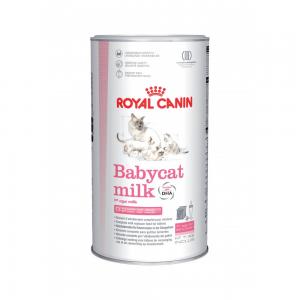Tips, tricks and hints on successfully weaning kittens
Weaning kittens is an important process. Usually, kittens will simply start to eat whatever food you have put down for them, and your only real input will be the important decision of deciding what to feed them. But sometimes you may want to encourage kittens to wean, either because:
-
you are hand raising them, or
-
the litter is large, or
-
their mum is not producing enough milk for them, or
-
They do not seem to be gaining very much weight
A guide to weaning kittens
Weaning kittens can begin when the kittens are 4 weeks old. In extreme cases, it can be started as early as 3.5 weeks if it is the best option.
What to wean your kittens with
Kittens have very sensitive systems at this young age, and it is important to feed them appropriate food. At the age of 4 weeks kittens can only eat wet food. Kittens must not eat any dry food/kibbles until they are older (around 8 weeks minimum) and you are absolutely certain that they are drinking enough water to keep them hydrated. Use a good quality, wet kitten food, with plenty of moisture in it.
Initially you may want to simply introduce some KMR (kitten milk replacer) as this will start to introduce the kittens to food sources other than their mother’s milk. At around 4 weeks old, it is a good idea to mix 50% KMR with 50% wet food. Put it in a flat saucer so that the kittens can access it easily. We also dilute KMR more than the instructions suggest.
Read our wet cat food reviews to see what our kittens thought of the leading brands...

Weaning kittens
The kittens will tend to find the food themselves, but if they are not paying any attention to it, you can lift them up and gently place them next to the saucer, or even put their paw slightly into it...they will then clean their paw by licking the milky-food off it! Be warned….weaning kittens can be a messy business!
Never push a kitten’s face into a plate of food or milk...if a kitten breathes in any liquid it can cause aspiration pneumonia, which is a medical emergency and can be fatal.
As time goes by you can gradually reduce the KMR content in the food, until they are eating the food normally. Some kittens will take to it much more quickly than others - don’t worry, they will all get there in the end.
If you have a kitten who is paying no attention at all to the food, even after a couple of weeks, then you can try a couple of things:
-
Try the kitten with some different brands and flavours of food, including a fish based food. Kittens are largely ruled by smell, so the smellier the better!
-
Try slightly warming the food - this makes it smell more! (but obviously don’t make it hot - just slightly warmed)
-
Make sure the kitten can get to the food and isn’t being pushed away by littermates: try taking the kitten away from the others for a short time and providing him with his own saucer of food
-
Try feeding the kitten some KMR (we use a syringe or pipette for this - see bottle feeding kittens for the technique). This will give the kitten a taste of something other than his mother’s milk.
-
Try mixing some KMR with some very wet kitten food in a syringe, and then see if the kitten will take it from the syringe (again, see bottle feeding kittens for the technique)
Read more…
-
Product reviews: the Diogenes Scratching Barrel
-
Product reviews: cat litter
Find out if we have any British Shorthair kittens available